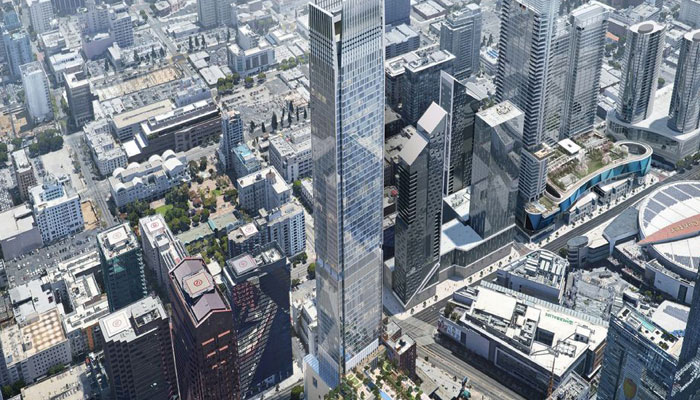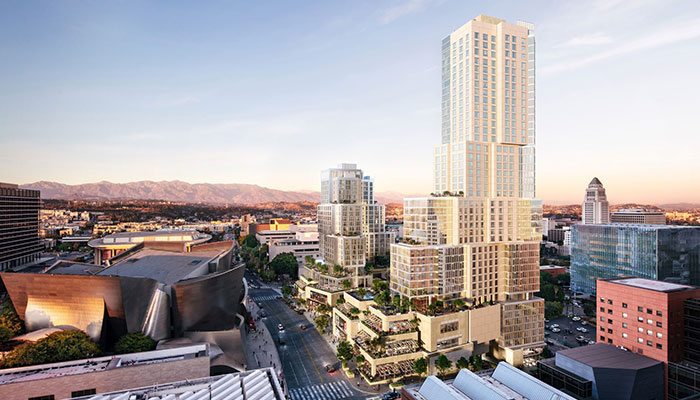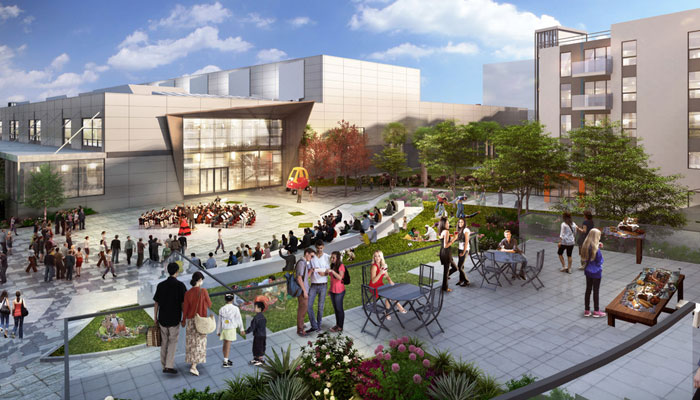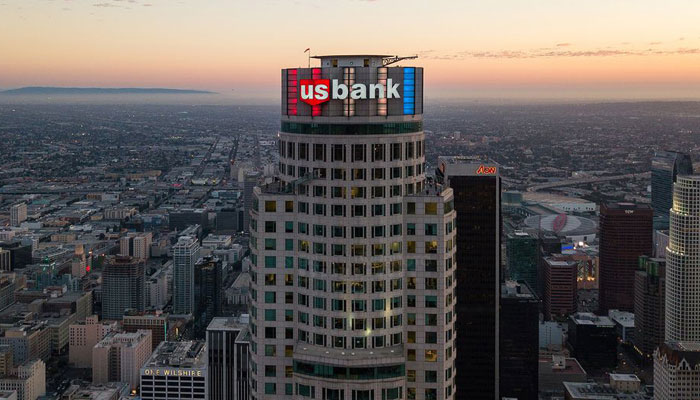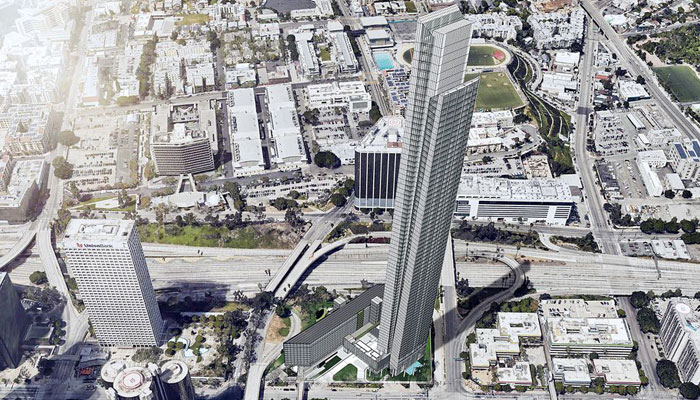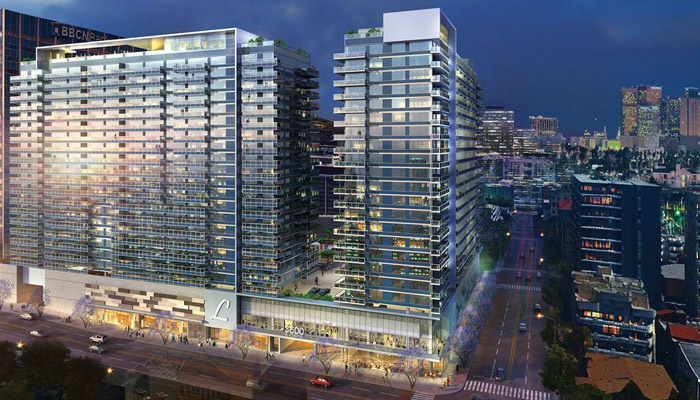66-story hotel and condo skyscraper near LA Live moving ahead
A 66-story skyscraper planned for a parking lot next to Hotel Figueroa in Downtown Los Angeles appears to be moving ahead on schedule.
Called Figueroa Centre, the proposed glassy condo and hotel tower has been quiet for a little more than a year. But now plans for the CallisonRKTL-designed project at Figueroa and Ninth are slated to be presented tonight to the Downtown LA Neighborhood Council’s planning and land use committee.
Figueroa Centre, ...
Construction kicks off on Frank Gehry’s next big project—a mixed-use complex on Bunker Hill
After nearly two decades of jumping planning hurdles, a $1 billion residential, hotel, and shopping complex designed by Frank Gehry is underway across from Walt Disney Concert Hall.
At a groundbreaking ceremony today, the architect said that when the dual-towered development is complete, “it’ll be the place to be.”
Formerly known as the Grand Avenue Project and now dubbed the Grand, the development will bring to Bunker Hill a 20-story, 309-room ...
Team chosen to lead Silver Lake Reservoir master plan update
Landscape architecture firm Hargreaves Associates has been chosen to guide the future of the Silver Lake Reservoir. The team, one of three finalists for the job, was approved Friday by the board of public works.
A spokesperson for the engineering bureau says the department should receive the last needed approval—from Mayor Eric Garcetti—by the end of the week and kick off the outreach process shortly after.
Though the Silver Lake Reservoir was ...
Here’s Why Athletes & Celebrities Are Investing in the Hamptons Right Now, Presented by Compass Group
With over 12 years of real estate experience and $1.5 billion in real estate sales, Compass' Matt Breitenbach has made a career selling the East End to some of the world's most highest profile buyers. From basketball players Jason Kidd and Kyrie Irving to actor Jeremy Piven and singer Trey Songz, the approach is always client first and personable.
In his latest chat with Hamptons, Breitenbach shares the property-buying secrets that both athletes ...
24-acre development in the Valley humming along
The first piece of a massive 24-acre residential, retail, and office project in Chatsworth is already in place. But there’s a lot more to come.
Ryan Hekmat and Jason Larian of Uncommon Developers gave a status update on their sprawling project at 20000 Prairie Street, the former home of a Los Angeles Times printing plant.
The plant has been renovated to serve as the headquarters of MGA Entertainment, the makers of big-eyed Bratz dolls. MGA Entertainment’s ...
US Bank Tower on the market
Downtown LA’s U.S. Bank Tower, the second-tallest building west of the Mississippi by a spire, is for sale.
The asking price is reportedly $500 per square foot, or approximately $700 million, says commercial real estate publication Real Estate Finance & Investment, which was the first to report the news.
The seller, Singapore-based OUE Ltd., purchased the tower on the border of the Financial District and Bunker Hill in 2013 for $367.5 million.
Beginning ...
Plans to build LA’s new tallest tower on Bunker Hill moving forward
Developers of what’s posed to be the tallest building in Los Angeles and west of the Mississippi River are moving forward with their plans to transform the site of a Downtownhotel into a glittering 77-story hotel and condo tower.
A representative for the China-based developer, Shenzhen New World Group, is slated to give a presentation on the project to members of the Downtown LA Neighborhood Counciltonight.
The presentation comes at an interesting ...
13 Real Estate Pros Share What They Wish They Knew As Newbies
Entering any new industry is always daunting. No matter how prepared or educated you are, there will always be some surprising new things you learn along the way.
This is especially true in real estate, where both local and national market trends can heavily impact the way you do business. We asked a panel of Forbes Real Estate Council members what they wish they'd known before they entered the industry. Below is their best advice for real estate ...
Q&A with Kofi Nartey on What Athletes Need to Know About Real Estate
This interview is part of our series, Building Your Team — Helping Professional Athletes Build Their Team of Professionals.
Many professional athletes come into their wealth at an early age, but may not be prepared to manage such a sudden, large influx of earnings. Connecting athletes with trusted advisors is imperative to ensure that these individuals are able to make their wealth last throughout their lifetimes — not just at the peak of their ...
See the two 23-story buildings set to replace a Koreatown parking garage
New renderings presented to the Wilshire Center Koreatown Neighborhood Council offer a look at two new towers proposed for Koreatown—one of many projects in the neighborhood from landlord and developer Jamison Services.
First proposed in 2016, this project at 3600 Wilshire would take the form of two 23-story buildings with 760 studio, one-, and two-bedroom apartments and about 6,000 square feet of commercial space.
The new project would replace ...
